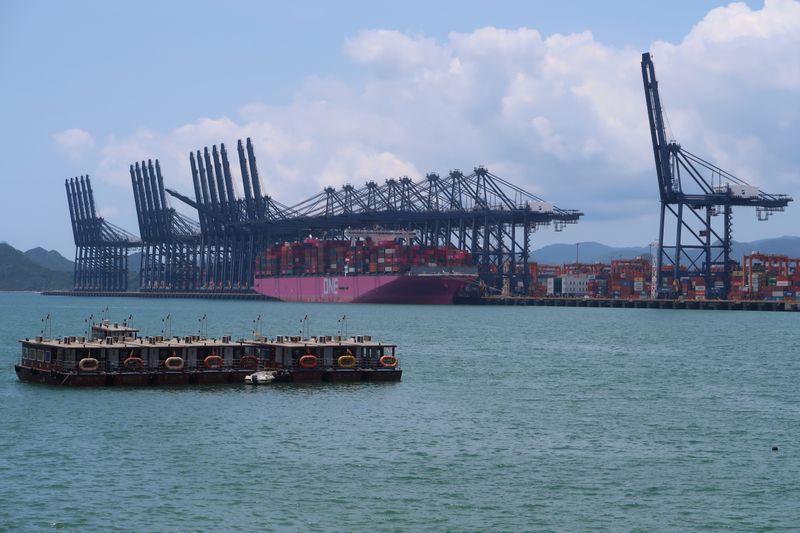BEIJING (Reuters) – China’s exports rose for the third consecutive month in August, eclipsing an extended fall in imports, as more of its trading partners relaxed coronavirus lockdowns in a further boost to the recovery in the world’s second-biggest economy.
Exports in August rose a solid 9.5% from a year earlier, customs data showed on Monday, marking the strongest gain since March 2019. The figure also beat analysts’ expectations for 7.1% growth and compared with a 7.2% increase in July.
Imports however slumped 2.1%, compared with market expectations for a 0.1% increase and extending a 1.4% fall in July.
The strong exports suggest a faster and more balanced recovery for the Chinese economy, which is rebounding from a record first-quarter slump thanks largely to domestic stimulus measures
“China’s exports continue to defy expectations and to grow significantly faster than global trade, thus gaining global market share,” said Louis Kuijs of Oxford Economics.
A private survey on manufacturing activity last week showed Chinese factories reported the first increase in new export orders this year in August as overseas demand slowly revives. The pick-up in business also led to a further expansion in production, marking the sharpest gain in almost a decade.
China’s export performance, boosted by record shipments of medical supplies and robust demand for electronic products, has not been as severely affected by the global slowdown as some analysts had feared.
All the same, some analysts cautioned that the stronger exports reflected in part the base effects of the year-ago weakness.
Imports unexpectedly slipped further into contraction, suggesting softer domestic demand.
But imports were largely stable in terms of volume, said Julian Evans-Pritchard of Capital Economics, in a note.
“With credit growth still accelerating and infrastructure-led stimulus still ramping up, import volumes should remain strong in the coming months,” he said.
Copper imports in August eased from the previous month’s all-time high, as an arbitrage window to bring in overseas metal shut and demand from key consumption sectors slowed. Coal imports slipped 20.8% from the month before. Iron ore imports fell 10.9% from July but rose from a year earlier on resilient demand for steel.
China posted a trade surplus of $58.93 billion last month, compared with the poll’s forecast for a $50.50 billion surplus and $62.33 billion surplus in July.
OUTLOOK STILL UNCERTAIN
The outlook is still far from rosy as external demand could suffer if virus control measures have to be re-imposed by trade partners later this year on a resurgence of the epidemic.
China also is looking to reduce its reliance on overseas markets for its development as U.S. hostility and the pandemic increase external risks that could hamper longer-term progress.
Already heightened U.S.-China tensions are expected to escalate ahead of the U.S. presidential election. China remains well behind on its pledge to boost purchases of U.S. goods under an agreement that was launched in February.
China’s trade surplus with the United States widened to $34.24 billion in August from $32.46 billion in July.
Top U.S. and Chinese trade officials reaffirmed their commitment to a Phase 1 trade deal in a phone call last month. “Both sides see progress and are committed to taking the steps necessary to ensure the success of the agreement,” the U.S. Trade Representative’s office said.
Falling imports of integrated circuits in August are likely the result of the new restrictions on U.S. companies doing businesses with Chinese technology companies, said Iris Pang, chief economist for Greater China at ING, in a note.
Bilateral tensions could also affect exports of technological products and services in the coming months, she said.
(Reporting by Gabriel Crossley; Additional reporting by Colin Qian; Editing by Shri Navaratnam)























